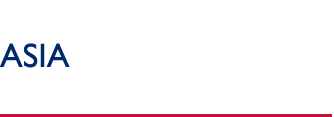Regional Program in Asia

USAID IN ASIA
www.usaid.gov/rdma/
CONTACTS
Mission Director
Olivier
Carduner
GPF Towers, Tower A
93/1 Wireless Road
Bangkok 10330
Thailand
Tel: 662-263-7400
Fax:
662-263-7499
RDMA Desk Officer
Cheryl Jennings
Tel:
(202) 712-4705
Email: cjennings@usaid.gov
 An outreach worker in Guangxi Province, China, teaches stevedores about HIV/AIDS and sexually-transmitted diseases. USAID is working throughout Asia to reduce the incidence of HIV/AIDS and mitigate its impact on infected people and their families. In China, it is providing technical assistance to prevent, detect and treat the disease. (Photo: USAID/Hal Lipper) Overview
USAID's Regional Development Mission for Asia (RDMA) oversees a broad portfolio of programs addressing numerous regional and transnational issues, such as responsible use of natural resources, improved access to clean water, reducing the incidence of HIV/AIDS, malaria and tuberculosis, preventing human and wildlife trafficking, facilitating trade and economic development, improving governance, and resolving political conflict. The Mission's regional approach to development projects provides a cost-effective way to manage services and programs. It strengthens regional institutions and helps to engage regional and international partners. RDMA was established in Bangkok in 2003 to manage bilateral USAID programs in Southeast Asian countries without USAID Missions, such as Burma, China, Laos, and Thailand. It now oversees bilateral and regional programs benefiting East and Southeast Asia.
Programs
Economic Growth: Addressing Environmental Issues
Asia's population is projected to increase by one billion by 2025, with most of the growth concentrated in cities. This rapid development already contributes to deteriorating environmental conditions and negative health and economic impacts. USAID is sharing innovative policies, practices and technologies to address key challenges in biodiversity conservation, transnational water conflict, access to safe water and sanitation, clean energy, and climate change. USAID promotes regional cooperation and networking as well as strengthened environmental governance.
Investing In People: Improving Health Care
Countries in Asia continue to suffer from the scourge of HIV/AIDS, avian influenza, malaria and tuberculosis. There have been an estimated 8.8 million HIV infections in the region, representing 21 percent of the global total. USAID helps countries stop the spread of HIV/AIDS by implementing model programs that target most-at-risk groups. It has developed hospices and provided home-based care for HIV/AIDS patients in Thailand and Burma. In addition, USAID helps countries in Southeast Asia build their ability to track the spread of tuberculosis and malaria, train researchers and caregivers, and provide care for those affected. With USAID's help, six countries in the region have established a network of standardized surveillance for anti-malarial drug resistance. USAID is helping countries control outbreaks of avian influenza, strengthening poultry surveillance at borders, and assisting the Association of Southeast Asian Nations (ASEAN) prepare for a possible human pandemic.
Economic Growth
USAID fosters economic integration and improved governance in a region with economies at significantly different stages of development. USAID supports ASEAN and the Asia-Pacific Economic Cooperation (APEC) in efforts to enhance trade, economic growth and regional governance. USAID also strengthens regional competitiveness through legal reform, anti-corruption efforts, access to credit, and support for micro-, small- and medium-sized businesses.
Peace and Security: Preventing Human
Trafficking
USAID supports an anti-trafficking campaign with MTV to raise awareness about and increase prevention of human trafficking in Asia. This public-private partnership has on-air, online and on-the-ground components, and is designed to reach young adults who may become victims or otherwise be drawn into the trafficking chain. The MTV EXIT (End Exploitation and Trafficking) campaign has been joined by dozens of Asian film stars and singers who appear in and narrate a pair of documentaries in their native languages. MTV, the world's largest television network, hosts an MTV EXIT website so people can learn more about trafficking and view the films. The project's next phase will feature live events to bring the anti-trafficking message to people in urban and rural areas and involve the private sector, NGOs and governments.
Investing In People: Helping Marginalized
Communities
Uneven economic growth, ethnic tensions, political repression, human rights abuses, and the aftermath of war in Southeast Asia all put stress on communities, including Burmese migrants, ethnic minorities in the Central Highlands of Vietnam, and war victims in Laos. USAID works to improve conditions for these groups. In southern Thailand, USAID has educational reform and civil society activities to reduce conflict through increased dialogue between the ethnic Malay community and the Government of Thailand.
Back to Top ^
|


